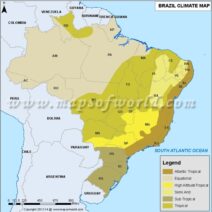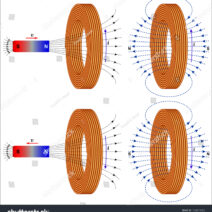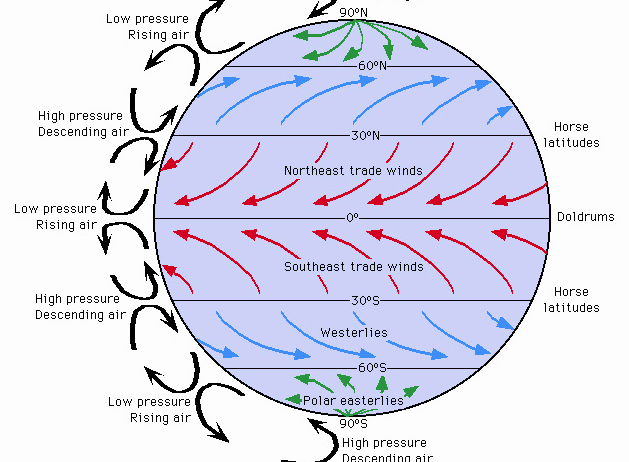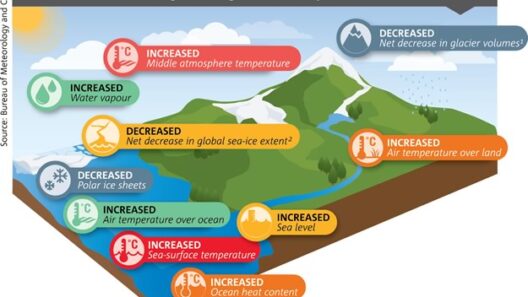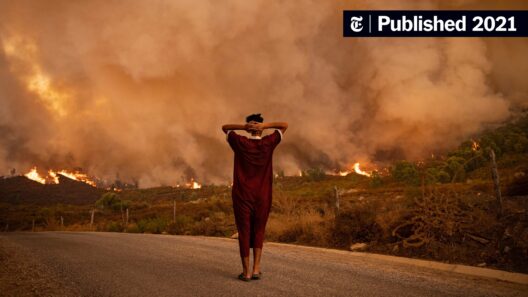In recent years, a phenomenon observed globally is the escalation of hot days accompanied by increasingly vigorous winds. This correlation serves as a compelling illustration of how climate change, particularly global warming, exerts profound influence over atmospheric dynamics. While the direct consequences of elevated temperatures are often highlighted, the resultant shifts in wind patterns can have far-reaching implications for weather systems, ecosystems, and human activity. Exploring this relationship reveals not only the intricacies of atmospheric behavior but also the urgency of addressing climate change.
At a fundamental level, the Earth’s atmosphere is governed by principles of thermodynamics and fluid dynamics. As greenhouse gases accumulate in the atmosphere, they trap heat, leading to a rise in surface temperatures. The increase in temperature induces changes in atmospheric pressure, sparking a complex interplay of air masses. In essence, hotter air expands, resulting in lower atmospheric pressure. The disparity in pressure creates a gradient that air attempts to equalize, thus producing wind. Therefore, a warmer climate does not merely result in hotter days—it also generates stronger and more turbulent winds as the atmospheric pressure attempts to balance itself.
The interaction between temperature and wind is further complicated by the Earth’s rotation, a factor known as the Coriolis effect. This phenomenon alters the trajectory of winds based on their latitude, causing them to spiral rather than flow in straight lines. As global warming accelerates temperature changes, the Coriolis effect becomes more pronounced. Areas that were once marked by stable weather patterns may experience sudden and severe shifts, which can lead to extreme weather events such as hurricanes, tornadoes, or unseasonably strong storms.
One stark evident impact of this evolving landscape is the increased frequency of extreme weather episodes. Regions that once enjoyed temperate climates are now witnessing heatwaves, characterized by soaring temperatures persisting over extended periods. The persistent heat can cause thermal inversions, resulting in stagnant air masses that become repositories for pollutants. When winds finally pick up, they can transport these contaminants over long distances, impacting air quality and, consequently, public health. Thus, what may initially seem like a simple relationship between hotter days and stronger winds belies a cascade of adverse outcomes stemming from a warming planet.
Moreover, the repercussions of these atmospheric changes extend beyond immediate weather phenomena. Ecosystems, which are finely attuned to specific climatic conditions, face existential threats as temperature and wind patterns shift. Flora and fauna that have evolved over millennia to thrive in particular environments may find themselves displaced. For instance, species that are unable to adapt to rapidly increasing temperatures may face extinction, disrupting local biodiversity and ecological balance. The intricate web of life is thus at risk, as warmer temperatures fuel the flames of disruption and uncertainty.
Human activities amplify these effects of climate-induced atmospheric changes. Urban areas, for instance, often experience the urban heat island effect, where concrete and asphalt absorb and radiate more heat than natural landscapes. This localized warming can lead to more intense heatwaves, further driving up temperatures. As stronger winds arise, these urban centers become susceptible to increased storm impacts, including flooding and property damage. In this way, the intersection of urbanization, climate change, and atmospheric dynamics creates a precarious situation requiring urgent action.
Additionally, agriculture is enormously impacted by these shifting climatic conditions. Farmers depend on specific temperature ranges and precipitation patterns for crops to flourish. As hotter temperatures coincide with unpredictable wind patterns, the potential for crop failure increases. Wind can exacerbate water evaporation rates, leading to droughts in regions that were previously suitable for cultivation. Furthermore, stronger winds may physically damage crops, leading to economic ramifications that ripple through local and global food supply chains. Farmers are forced to adapt, sometimes at great expense, adding to the pressures of an already strained industry grappling with climate-related challenges.
As global warming continues to unfold, the lessons gleaned from observing the relationship between hotter days and stronger winds grow increasingly urgent. Policymakers, scientists, and citizens must engage in collective action to mitigate the effects of climate change and adapt to these new atmospheric realities. This could involve stricter regulations on greenhouse gas emissions, investment in renewable energy sources, and initiatives promoting sustainable agricultural practices. Awareness at the individual level is equally vital; each person can contribute to reducing their carbon footprint, supporting local and sustainable businesses, and advocating for policies that promote environmental stewardship.
In conclusion, the interplay between escalating temperatures and winds is more than just an interesting observation; it is a harbinger of the challenges that lie ahead for both humanity and the planet. The increasing intensity of heat and winds serves as a stark reminder of the urgent need to address global warming. Understanding this relationship highlights not only the delicate balance maintained by Earth’s atmospheric systems but also emphasizes the broader implications for ecosystems and human societies. As we advance, it is imperative to recognize the interconnectedness of climate, wind, and the future of our planet, driving us toward a more sustainable and resilient world.
